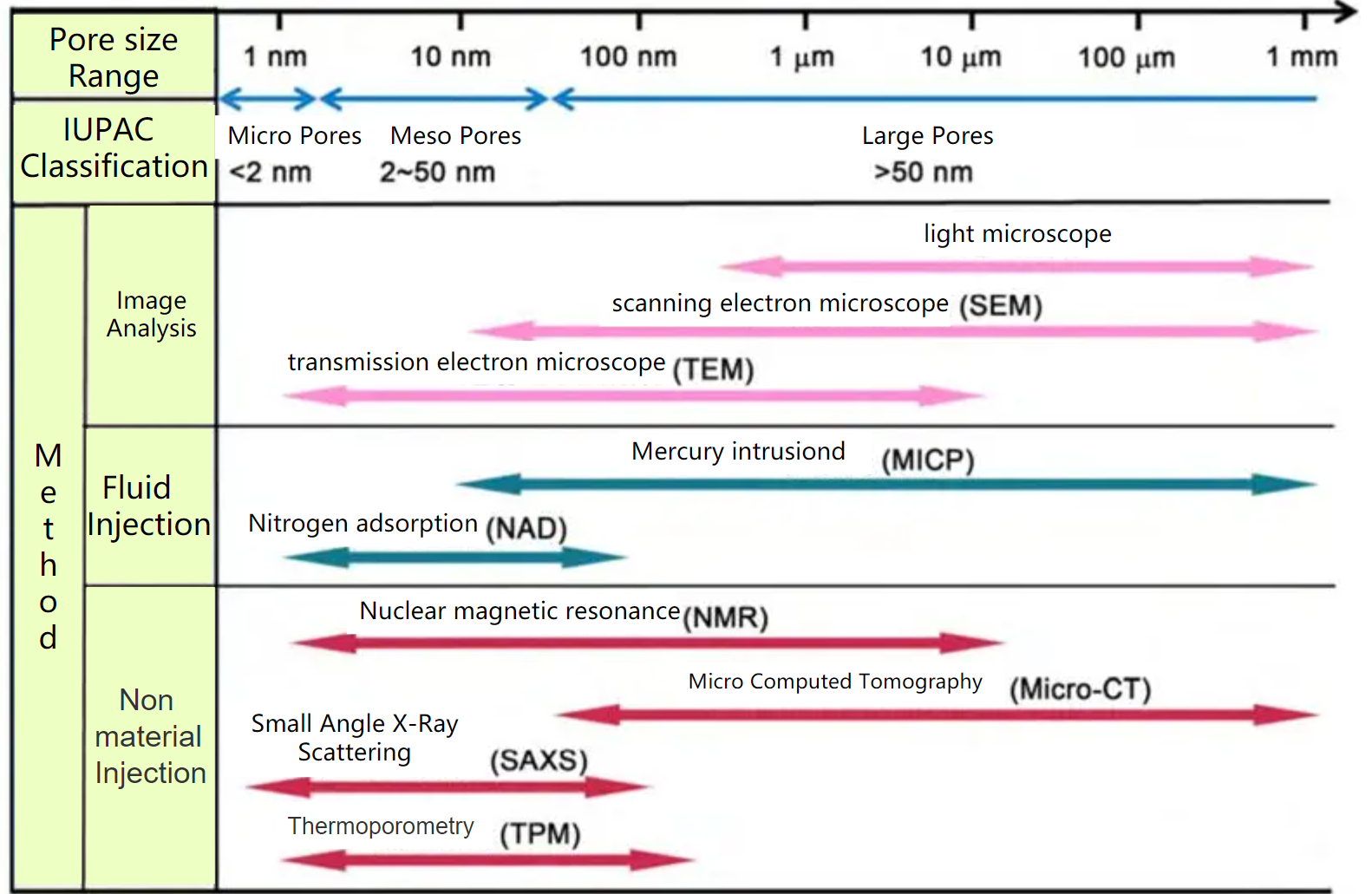Pore Size Distribution NMR
Pore size distribution stands as a vital attribute within various domains, notably materials science, chemistry, and geology. Its significance extends to shaping the fundamental nature of materials, exerting substantial influence over their traits and behaviors. This phenomenon holds the capacity to intricately modulate essential properties, encompassing permeability, surface area, adsorption capability, and mechanical resilience. Consequently, the exploration and understanding of pore size distribution remain pivotal for harnessing materials with tailored characteristics that align with desired applications and outcomes.
NMR Pore Size Distribution Analysis
The principles of Nuclear Magnetic Resonance (NMR) offer a robust method for investigating pore size distribution. This technique initiates with the exposure of a sample to a potent magnetic field, compelling the nuclei of specific atoms within the sample to align with or counteract the magnetic influence. Following this, a radio frequency (RF) pulse is administered to the sample, infusing the nuclei with energy and prompting them to attain an excited state. Upon cessation of the RF pulse, the nuclei revert to their original orientations, liberating the absorbed energy in the form of electromagnetic radiation. This radiation is then captured by an antenna, subsequently producing an NMR spectrum that divulges invaluable insights into the sample’s physical and chemical attributes.
In the realm of analyzing pore size distribution within rock core specimens, NMR demonstrates its prowess. This method becomes a lens through which the intricate attributes of minerals and fluids within the rock sample are explored. The NMR spectrum assumes the role of an informant, unveiling data concerning the population of hydrogen atoms present, their specific chemical environments, and the volume of fluid encapsulated in the sample. This wealth of information translates into the ability to deduce critical parameters such as porosity, permeability, and fluid composition within the rock. Moreover, the insights extend to unraveling the composition and structure of the minerals constituting the sample.
Pore Size Distribution Analysis with Niumag’s NMR Technology
The term “Pore Size Distribution NMR” encompasses a range of advanced NMR instruments developed by Niumag Corporation.
Niumag’s NMR instruments are characterized by a unique low-field, permanent magnet design that seamlessly combines heightened sensitivity and resolution with a compact form factor and budget-friendly cost. These instruments boast a comprehensive set of features, including automated shimming for optimal performance, precise temperature control, and an intuitive user interface tailored for efficient data analysis and processing.
The versatility of Niumag’s NMR instruments is evident through their application across a diverse spectrum of scenarios. They find utility in quality control processes, research and development endeavors, and real-time process monitoring. Notably, these instruments excel in delving into the composition, structure, and properties of an extensive array of materials. From polymers and chemicals to food products, pharmaceuticals, and geological specimens, Niumag’s NMR technology unlocks insights into a multitude of substances.
Niumag offers a selection of NMR instrument models, each characterized by varying field strengths and sample sizes. Ranging from 0.5 Tesla to 2.0 Tesla, these models cater to an assortment of analytical needs. With their deployment spanning academia, research laboratories, and industrial environments, Niumag’s NMR instruments contribute significantly to materials science, chemistry, geology, and various other scientific domains. Through their precision and versatility, these instruments stand as essential tools driving exploration and understanding across diverse fields of study.
NIUMAG 2MHz Rock Core NMR Analyzer Benchtop NMR MicroMR02-025V
Advantages of Measuring Pore Size Distribution through NMR
The utilization of Nuclear Magnetic Resonance (NMR) as a technique for investigating pore size distribution comes with a multitude of benefits, enhancing its appeal for studying the properties of molecules and materials:
Non-destructive Nature: NMR operates as a non-destructive method, permitting the thorough analysis of samples without causing any alteration to their chemical or physical attributes. This preserves the integrity of the original materials.
Minimal Sample Preparation: The simplicity of sample preparation is another virtue of NMR, often necessitating only the dissolution of the sample within a suitable solvent. This expedites the analysis process and minimizes disruptions.
Quantitative Insights: NMR is equipped to yield quantitative insights into the concentration and distribution of diverse components within a given sample, bolstering precision in analysis.
Versatility: NMR’s versatility shines through as it accommodates the examination of an extensive array of materials, encompassing organic and inorganic compounds, polymers, proteins, and even intact cellular structures.
Radiation-Free: In stark contrast to certain analytical methods such as X-ray crystallography, NMR circumvents exposure to ionizing radiation. This hallmark ensures the safety of both the user and the sample under scrutiny.
High Resolution: NMR boasts remarkable resolution capabilities, adept at distinguishing between distinct chemical groups within a sample, even when encountered within complex mixtures.
Structural Revelation: The technique excels in offering intricate structural insights into molecules, divulging comprehensive details about their three-dimensional configurations, interatomic distances, and chemical contexts.
Incorporating these advantages, NMR emerges as a powerful tool for exploring pore size distribution, enabling researchers to glean profound insights into the material world while maintaining sample integrity, safety, and efficiency.
 NIUMAG
NIUMAG


